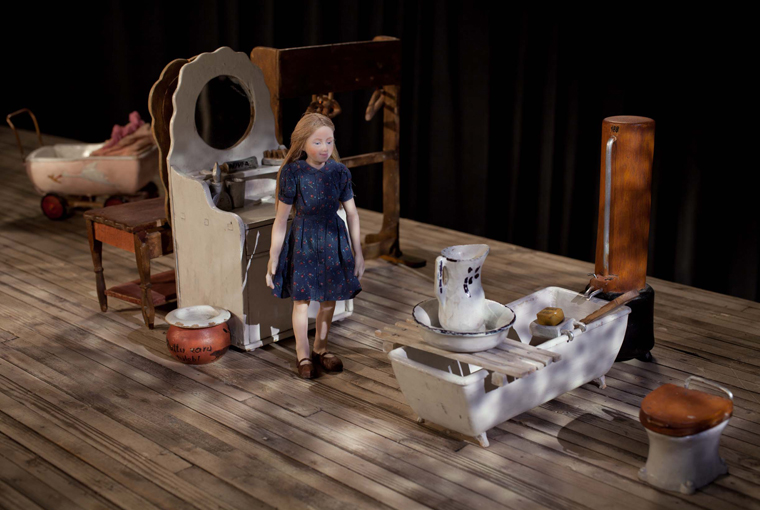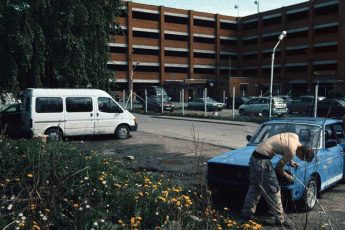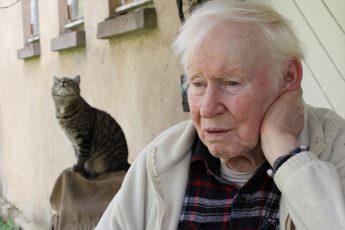
Estonian filmmaker Ülo Pikkov prefers to work with tactile materials rather than digital images, does not believe in audience targeting and is certain that an honest film will always reach its intended audience. Heir to the strong Estonian animation school, known worldwide since the 1970s, and a student of Priit Pärn, the post-Soviet era’s leading Estonian animator, Ülo Pikkov cares about the past and memory and is the proud owner of several peculiar collections of objects. These passions, in combination with his eccentric imagination, analytical thinking and a seemingly all-encompassing talent, make him one of the most interesting authors in the field of contemporary documentary animation.
Unlike Jan Švankmajer and the Quai brothers, from whom Pikkov has drawn and whose limitless fantasy builds surreal worlds only remotely linked with reality, Ülo Pikkov uses animation to bring real objects of historiographic value into life or to tell forgotten stories where material evidence is mostly missing but emotions are still present. His cinema emerges from the desire to revive the otherwise anonymous remnants of the past and results in circumspect reconstructions of personal and collective memory. The sense of tactility in his animated imagery proposes a more “tangible” interpretation of memory and fleshes out its otherwise ephemeral dimensions. It also contributes to the virtual safeguarding of physical mementos, as some participating objects have documentary value in relation to the film plots. A recurring theme of his films are painful issues of physical and psychological torture, destruction, and personal traumas, as exemplified by four shorts discussed below. Having said that, Pikkov’s approach avoids explicit interpretations and political statements—instead, it delicately draws associative portraits of those events. Yet his portraits are based on testimonies, material evidence and documented factology, and thus express afflictive recollections through visual poetry with the means of stop-motion animation in combination with live action footage. Functioning as authentic forget-me-not vessels, his films gather otherwise unnoticed pieces of private pasts, gluing them together in filmic bodies that build up collective meanings.
Body Memory, Pikkov’s first stop-motion project for the Tallinn-based experimental animation studio Nukufilm, is inspired by one of his father’s boyhood stories that had had a deep impact on him. During the 1949 deportations from Estonia to Siberia undertaken by the Soviet authorities, half of Pikkov’s father’s classmates disappeared overnight, including his father’s best friend. Shocked by these events, the boy ran to an apple tree near a railroad where the trains with the deported were passing, realizing that “the light between the ground and the sky would never be the same”.1 Pikkov situates his film at this very place and “gives a pencil” to the same apple tree, which draws its sorrowful memories. The prisoners in the freight wagon are 25 women, corresponding to the documented number of deportees in a single car in which men and women were transported separately. Puppets are connected to the past with threads coming out of their heads and one can tell that Pikkov wanted them to have individual personalities. This individual character of each puppet is most clearly expressed in their movements; their aggression and cruelty represent paralyzing fright. Pikkov says he was elaborating on Joseph Brodsky’s question why people did not openly stand up to Soviet terror at the time. Because he thinks that it was due to fear, he reconstructs dreadful emotions that drown out reason and make one violate those experiencing the same fate. The title implies that collective memory, being subconscious, is soaked in genealogy, in the ground and the trees, in the material body of the surrounding world which keeps record of the pain of our predecessors. In parallel, Pikkov infixes a sub-plot, suggesting that the apple tree is a metaphor for the tree of Eden: the first sketch it draws represents the biblical serpent that appears as the evil’s herald in the end. A mixture of stop-motion technique and fiction images, Body Memory is constructed as a highly symbolic piece that works as a philosophical manifesto against terror. Despite being inspired by concrete historical events, it can be related to similar deeds executed within other totalitarian regimes.
With Empty Space, Pikkov made another hybrid of stop-motion and live action techniques. The film gradually reveals a striking story of terror and fear underneath a beautiful etude of a puppet girl playing with her empty home’s inventory and flecks of sunlight. In the beginning, the puppet house is filmed from above. Near the end, we see an old lady sitting beside it, shot in live action. The old lady is Merike, whose childhood story inspired this short film. Merike’s father, an officer in pre-Soviet occupation Estonia, was hiding away in the family house cellar for ten years during the Soviet Occupation of Estonia for fear of being imprisoned or deported to Siberia. In order to avoid going insane, he crafted a miniature copy of his home. Upon release, he gave it as a surprise present to 10-year-old Merike, who had not been aware of her father’s existence. The film used this very dollhouse on-set, which is now considered patrimony and is part of the Tartu Toy Museum’s collection. The masterfully configured location set with the cheerful but solitary girl on the backdrop of an upcoming threat successfully transmits the sense of absence, the notion of the “empty space” in her childhood that would never truly be filled, even after her father’s miraculous appearance. The final line confirms it: even though she was happy with the present, she was already too old for the dollhouse. The father had arrived too late to share the moments of her childhood with her.
In 2014, Pikkov released a film in which time plays an even more explicit role: Tik-Tak reconstructs a famous clocksmith’s workshop in Tallinn, which was destroyed during WWII. In order to accurately revive the space along with its animate and inanimate inhabitants, Pikkov uses the clocks that were saved after the demolition of the building in the film. Moreover, the film’s premiere took place in a cinema hall built on the same exact location, so the clocks “went back home” many years later. The plot depicts a chasing game between a clocksmith and a mouse which inevitably transforms into a race against time. By synchronizing the camera movements with the ticking of a clock, the film poetically meditates on how life edges towards its end with every moment that passes. Death is allegorically portrayed as loss of control over time. Conversely, only its domination through the usage of its representative tools – clocks -, as a means of creation, could bring eternity to the soul.
Pikkov has completed other abstract works, notably a 2017 short entitled Letting Go. Its main character is a puppet made out of books who figures in a series of vignettes featuring other puppets (mounted onto brushes), a real-life girl, and finally the sea. The set was constructed out of diaries of orphaned girls. The idea for Letting Go originates with the Japanese tradition hinamatsuri, according to which one should let traumas pass by making a puppet and throwing it into the sea. The broken dolls perched on brushes represent the girls’ troubled souls, while the predominant white in the frames prompt a purifying effect. Created by recycled pieces, they literally embody memory vessels, while the book puppet is also constructed by material out of remnants from the past. Pikkov explains that the film’s mission was clearly therapeutic, which is why the process the girls participated in was more important than the story depicted in the final product. Agnes, the most active among the girls involved in the development of the idea, appears at both the beginning and end, similarly to Merike in Empty Space. They are both physically invited in order to witness the healing of their innermost suffering.
The stories behind all four films cannot be fully appreciated without an accompanying text. At first glance, they might even be associated with contemporary art installations, because of their reliance on a commentary to decipher their meaning. It appears that their original documentary nature requires the use of factual metadata, which ties them firmly to the original sources of inspiration. On the other hand, the application of animation techniques fills the memory gaps where factology gives in to emotional memory. The objects factually related to their stories help effect an authentic aura. But in and of themselves, they hardly convey all of the recollective electricity they are charged with. Here the author’s imagination, as well as his artistic and manual skills, help complete an organic realm that reconstructs the emotional and experiential tissue attached to the original stories they are based on. This emotive approach to memory reconstruction appears to matter to Ülo Pikkov, which explains why he does not single out perpetrators by introducing them as characters, for example, or how sensory experiencing prevails over rational explanation in virtually all his short films. Focusing on the fervent pulsations of the “little man” within the historical picture with respect and tender understanding is probably the most valuable aspect of his delicate and humane cinema.
References
- 1.Pikkov, Ülo, Anti-Animation: Textures of Eastern European Animated Film, Estonian Academy of Arts, 2018, p. 158.




Leave a Comment